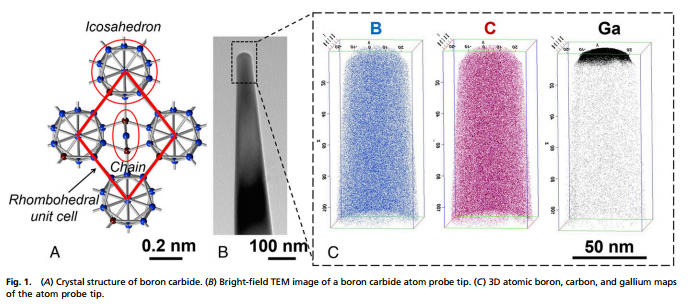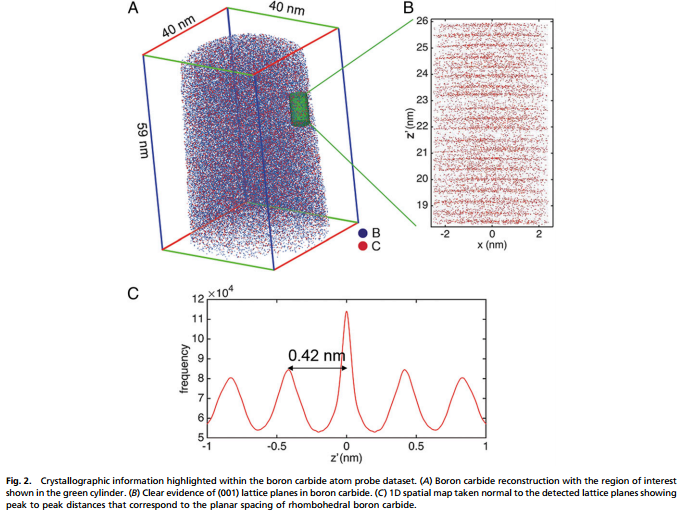Oct 20, 2016 | No Comments | By Michelle Pagano

Dr. Kelvin Xie (Left) & Dr. Kevin Hemker (Right)
Join us in congratulating HEMI fellow Prof. Kevin Hemker and his collaborators for their latest publication: “Breaking the Icosahedra in Boron Carbide.” The paper discusses their revolutionary use of Laser-assisted Atom Probe Tomography to study the atomic structure and bonding of boron carbide ceramics.
Hemker and Dr. Kelvin Xie (Assistant Research Scientist, JHU) discovered that the 12-atom icosahedra disintegrated during their experiments. They worked in conjunction with Professor William A. Goddard III from Caltech, and Professor Julie Cairney from The University of Sydney.
“About ten years ago, we discovered that boron carbide undergoes amorphization and suffers a dramatic loss of strength during ballistic impact, but a fundamental understanding of the underlying mechanism for this amorphization has not been fully established.” says Hemker. Cairney adds that, “Atom probe has been generally used to identify the chemical and spatial information of individual atoms and clusters. In this work, the temporal, spatial and compositional information provided by atom probe tomography makes it a unique platform for elucidating the relative stability and interactions of primary building blocks in hierarchically crystalline materials”.
These would be the first atom probe experiments on boron carbide (to our knowledge). The research was supported by grants from the Army Research Laboratory, Defense Advanced Research Projects Agency, and the National Science Foundation. Click here to view the full article.
Hemker was recently elected a fellow of the American Association for the Advancement of Science “for discoveries in underlying atomic-scale processes governing mechanical behavior of advanced materials systems, including nanocrystalline, micro-lattice, thermal barrier, and high-temperature materials.” At HEMI, he and his students have employed atomic resolution electron microscopy and microscale mechanical testing to change the way the materials community thinks about and understands the mechanical behavior of advanced materials.





